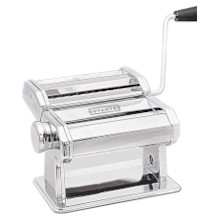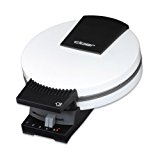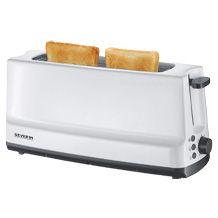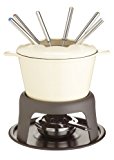Glass kettle purchasing advice: how to choose the right product
- The most important facts in brief
- Glass kettles offer an appealing aesthetic, which is usually enhanced by LED lighting.
- Glass is absolutely pollutant-free and tasteless, but not as robust as stainless steel or plastic.
- The outside of the container can heat up strongly and should not be touched directly after boiling water.
- A filling capacity of 1.7 litres and a power of about 2,200 watts are common for glass water boilers.
Chic and hygienic at the same time
A kettle is part of the basic equipment of a contemporary kitchen. Even outside the kitchen, for example in a hotel room or flat share, there is often a kettle. All it needs is a power socket. Kettles not only score points for their flexibility of use, but they also heat water faster and more energy-efficiently than an electric or gas cooker. One of the most important distinguishing features of kettles is the material of the housing. Plastic, stainless steel and glass are used. It should be noted that although a glass kettle is mostly made of glass, parts such as the handle or the base are still made of stainless steel and plastic.
Glass kettles are characterised by their attractive appearance. Through the glass, you can see the water slowly boiling and, if necessary, interrupt the boiling process before the water starts to boil. The LED lighting, which is often present, provides a futuristic aesthetic. Unlike plastic, which often contains the harmful BPA (bisphenol A), glass is completely harmless to health. Unlike stainless steel, the material is also tasteless. Cleaning a glass kettle is also usually problem-free. In addition, the transparent surface ensures that limescale deposits and other impurities jump directly into your eye, so you always know whether the kettle needs to be cleaned. However, many users see this as a disadvantage, as fingerprints and limescale detract from the chic aesthetics of the appliance.
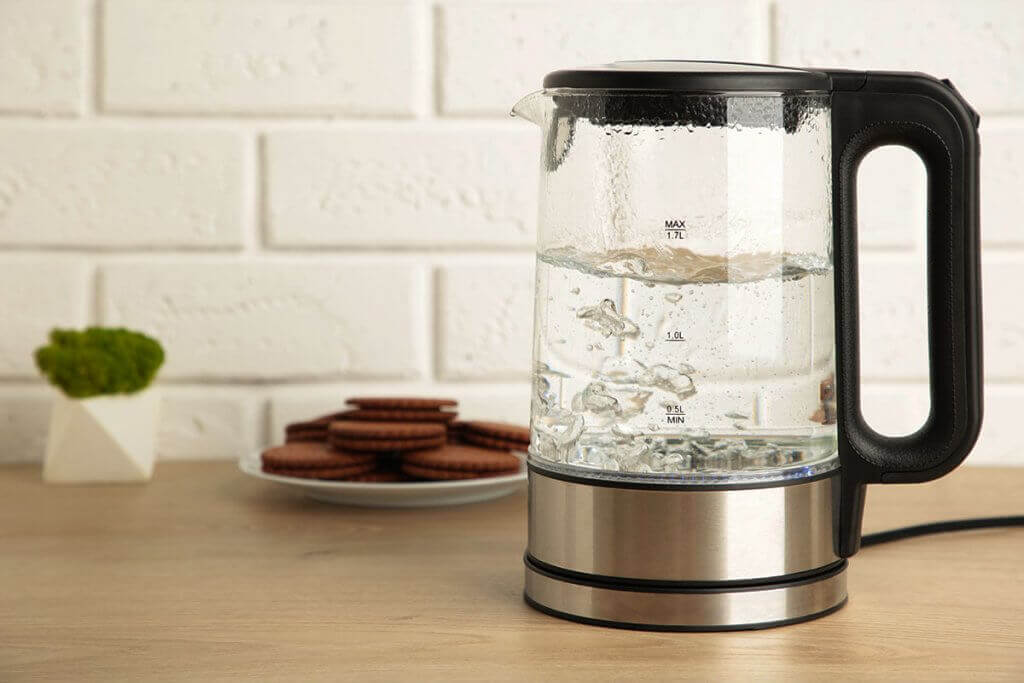
In terms of robustness, however, glass kettles cannot compete with stainless steel and plastic versions. Although the borosilicate glass used for this purpose is very temperature-resistant, it will still break after a knock or a fall. The housing of such a kettle also heats up during use. When handling it, you should make sure that you hold the appliance by the handle, which is usually encased in plastic and thus remains cool. With double-walled glass kettles, the risk of burns is lower, but these also heat up. Since glass kettles are heavy in themselves and the weight of the contents is added, you sometimes need both hands to pour out a container completely filled with water. This impairs handling.
Pro points
- Chic appearance
- Usually BPA-free
- Tasteless
- Easy to clean
Drawbacks
- Fragile
- Heat conductive
- Heavy
The construction of a glass water boiler
Glass water kettles are usually cordless. This does not mean that they are battery- or accumulator-powered, but that the water container does not have a cable. Instead, this is located at the base. The container can simply be removed and moved freely.
Water container
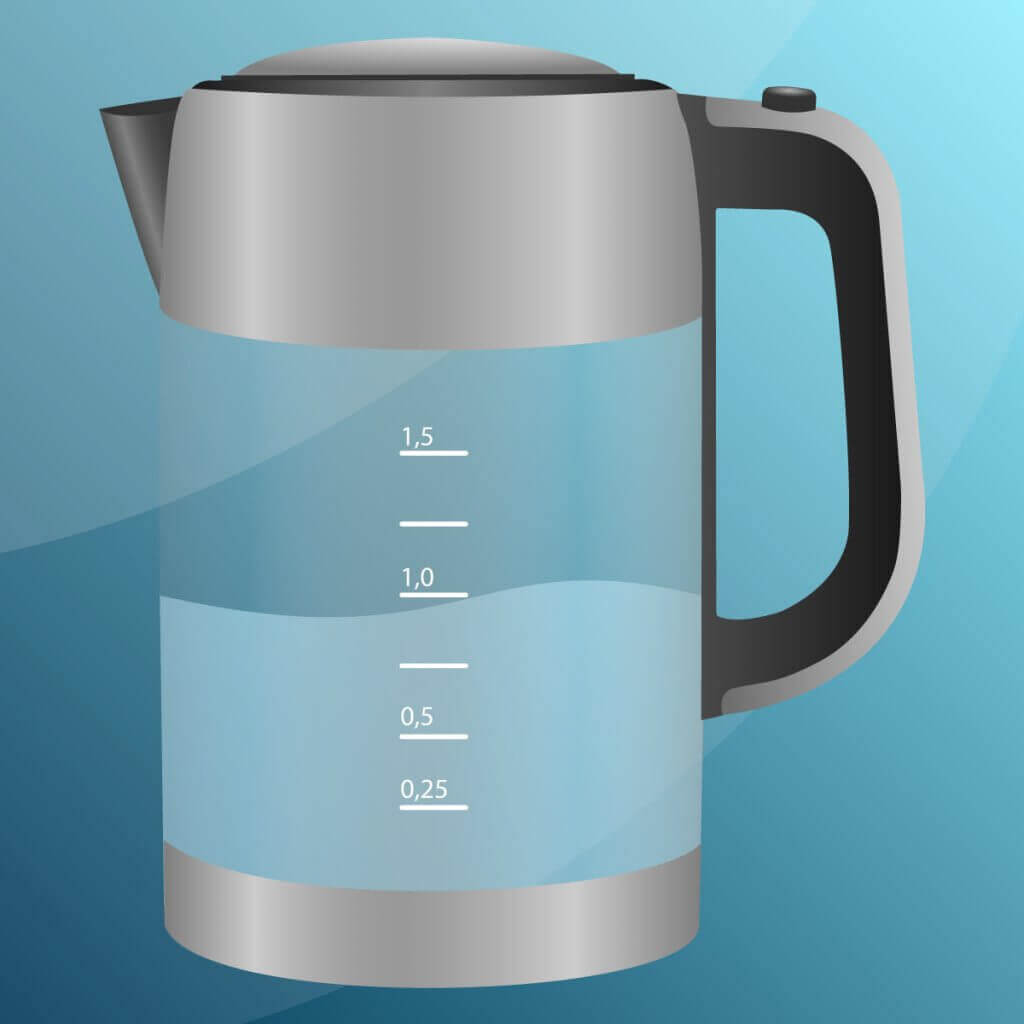
The water container is the main part of the kettle. In glass kettles, it is mostly made of glass and is therefore transparent. Sometimes it is coated with stainless steel or plastic. A water level indicator provides information about the filling quantity. Many glass kettles are also equipped with LED lighting, which usually makes the appliance light up blue when in use. You can simply clean the exterior with a cloth, but the interior of the container must be decalcified regularly.
Cover
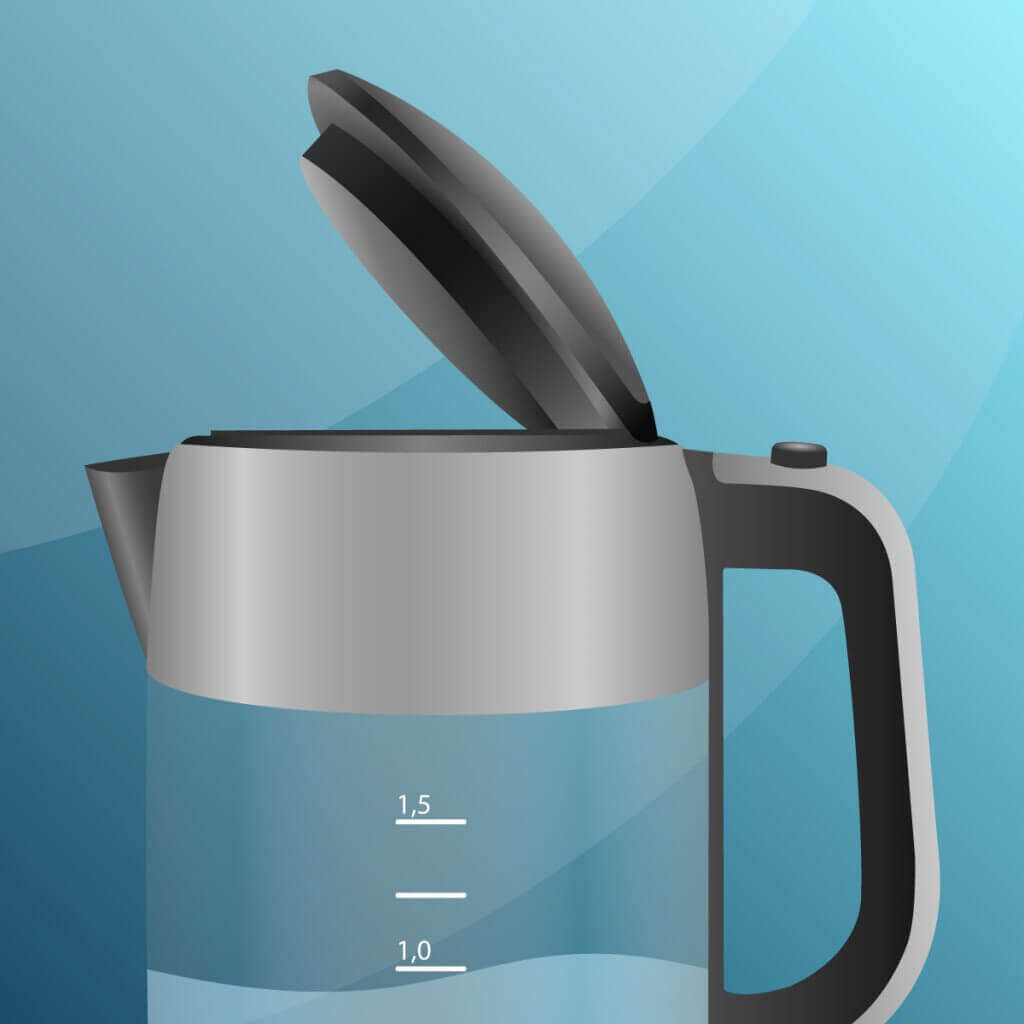
The lid of a glass water container – unlike the container body – is made of plastic or stainless steel. Similar to a pot lid, it ensures that as little heat and steam as possible escape during cooking. It is usually opened by a knob or lever, either on the lid itself or on the handle. The operability of the lid has a strong effect on the handling of the glass water boiler, as it is operated every time it is filled.
Handle
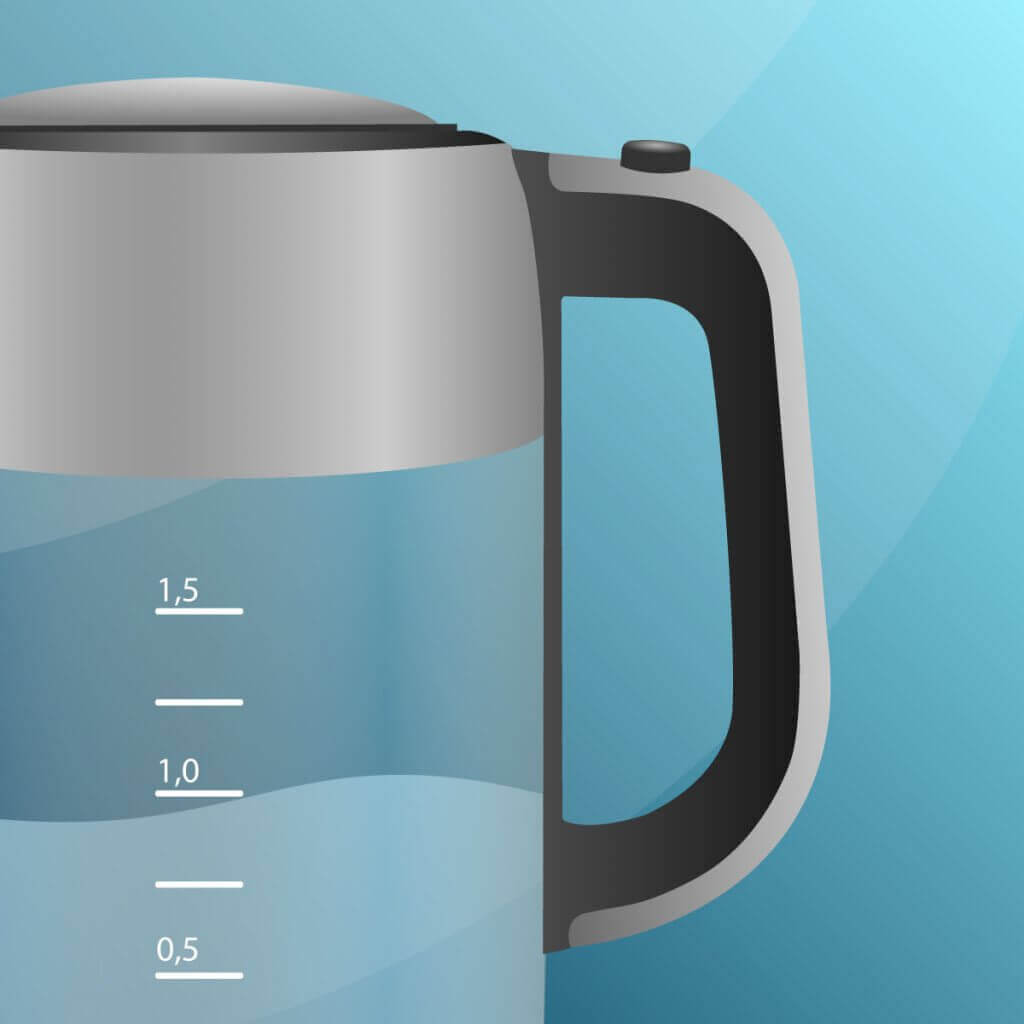
The handle is also part of the water container and is usually covered with plastic to prevent burning. An ergonomic handle ensures comfortable handling. The switch-on button is usually located on the handle. The lid is also often opened at the handle. Extras such as a temperature display and a temperature control are also usually integrated into the handle. There should be enough space between the handle and the glass body of the container so that your fingers do not come into contact with the latter.
Filter
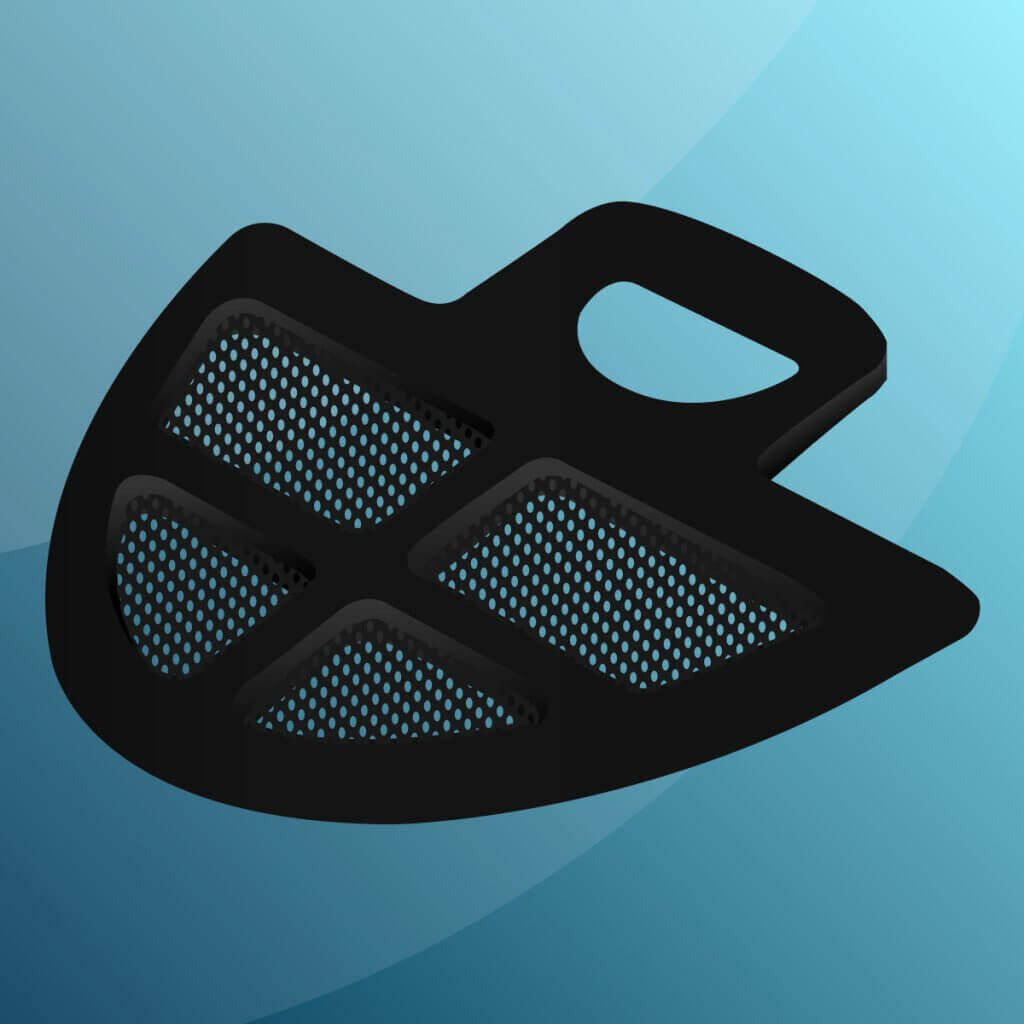
In the past, the filter was an optional extra, but nowadays almost every model has one. It is mounted either on the lid or on the inside of the container and catches small limescale particles during pouring. When the filter has collected a certain amount of limescale, it can be removed and cleaned. However, it does not replace regular descaling. After all, the inside still calcifies, which can damage the appliance in the long term.
Heating coil
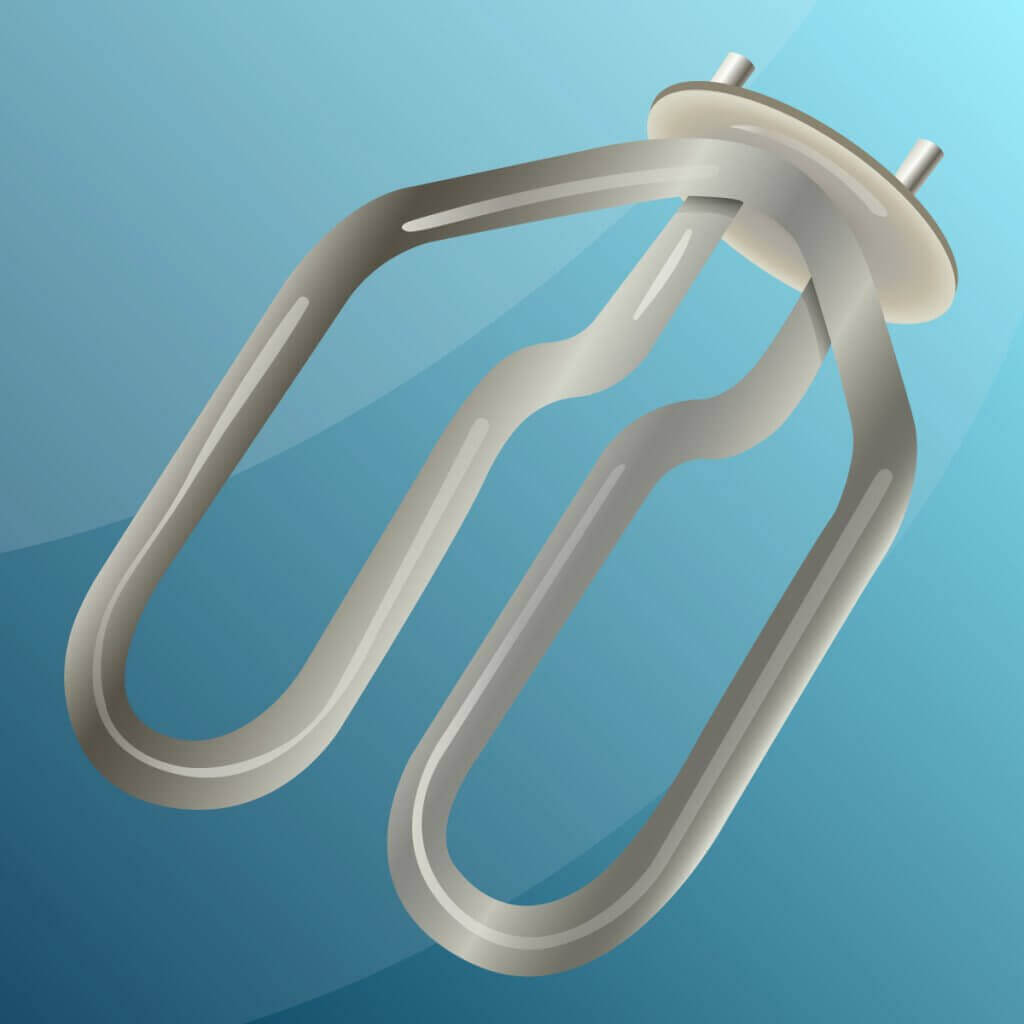
The heating coil or heating element heats the water. This is a metallic device on the lower, inner part of the container that heats up strongly and transfers the heat directly to the water. It is either open in the tank or covered. An open spiral calcifies quickly and needs to be cleaned more often. In addition, it is not particularly attractive and remains covered in most glass kettles, which are, after all, transparent.
Base
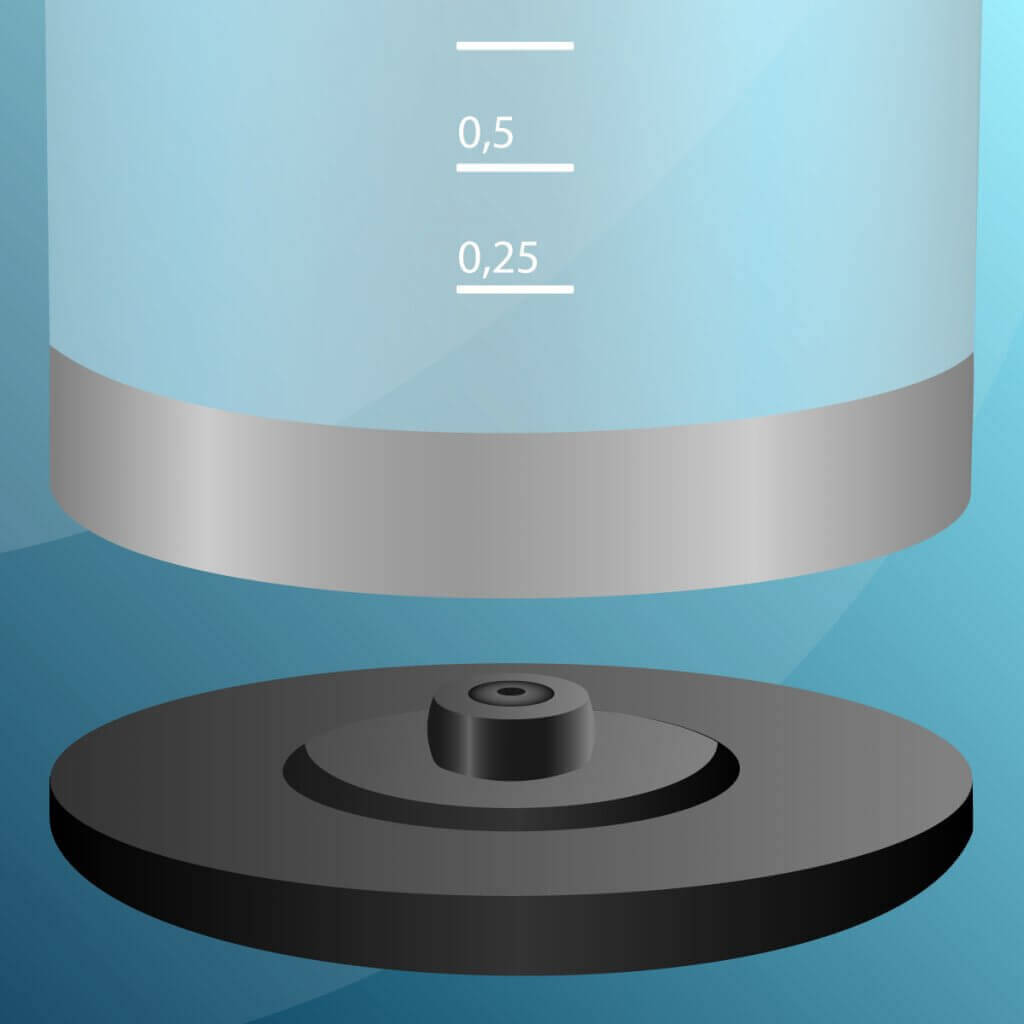
The base is the base on which the water container is placed for power supply. It is either circular or oval and made of plastic and metal. The base is connected to the power cable. Some models also have a cord winder for space-saving storage and suction cups for slip resistance. Often, a display and controls are also integrated into the base, if they are not on the handle.
What makes a good glass kettle
There are also big differences between glass kettles. Features such as additional functions or handling in particular vary from model to model and also have a strong impact on the purchase price.
Power
Kettles can have an output of about 500 to 3,000 watts. However, glass kettles are usually found with a power of 1,800 to 2,200 watts. A glass water boiler with a power of 2,200 watts needs about 3 minutes to boil 1 litre of water. A high output usually goes hand in hand with a shorter boiling time, but also a higher volume.
Filling quantity
The containers hold between 0.5 and 2.0 litres. However, most glass kettles can be filled with a maximum of 1.7 litres. For a single household, 0.5 to 1.0 litre is sufficient. For two people and upwards, however, 1.5 litres or more are recommended.
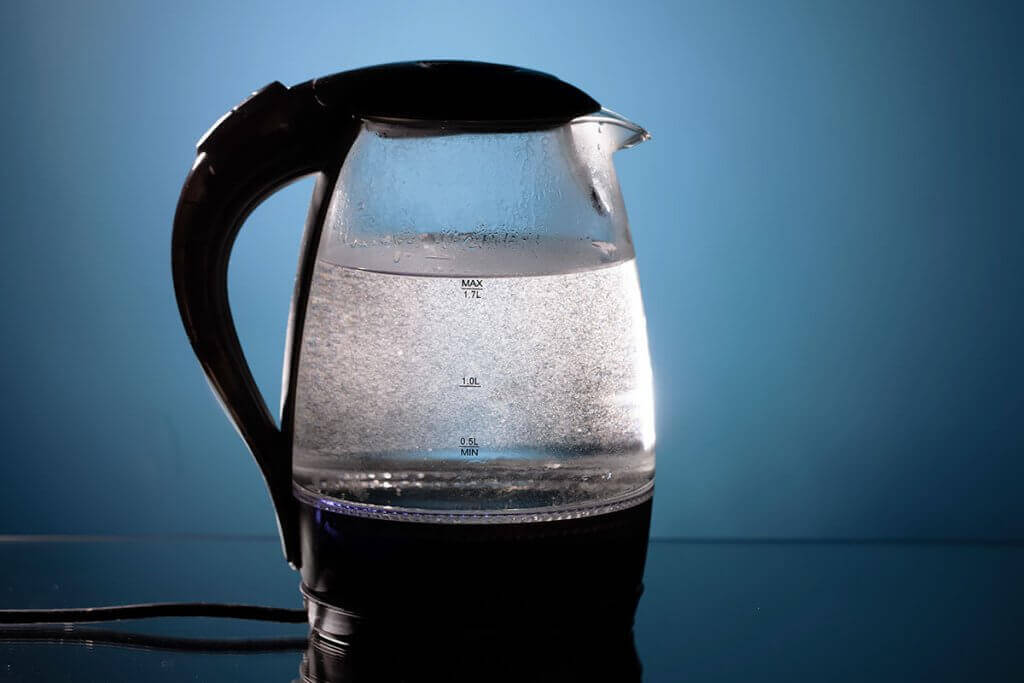
Power consumption
Kettles are more efficient at heating water than cookers or microwaves. This is because the energy is transferred directly to the water by the heating coil. The higher the power of a kettle, the shorter the boiling time. A short boiling time ensures that less heat is released into the environment, which in turn leads to lower electricity consumption. So although it sounds contradictory, a kettle with higher power uses less electricity.
Safety
Three functions ensure the safety of the glass kettle: the overheating protection, the dry-running protection and the automatic switch-off function. In principle, all three functions ensure that the appliance does not overheat. This could damage the electronics and lead to a short circuit. The functions are often confused with each other, but they are not identical.
The dry-running protection ensures that the appliance is not accidentally switched on when it is empty or when the heating element is not completely submerged in water. This prevents overheating or even a short circuit.
An overheating protection switches the appliance off if it heats up too much, regardless of whether water is present or not.
The automatic shut-off function ensures that the appliance switches off when the water has reached boiling temperature. It is now standard and should be present in every kettle, as the function not only prevents overheating, but also saves time and electricity by not boiling the water longer than necessary.
In addition, a heat-insulating handle contributes to safety by reducing the risk of burns. The glass kettle must also ensure a certain degree of tilt resistance. This is usually done with suction cups on the lower part of the base.
Additional functions
If you are prepared to spend a little more money, you can also expect useful additional functions. One of these is the temperature display: A display on the base or water container shows the temperature of the water during the boiling process. If you do not want to let the water boil completely, you can switch off the glass water boiler as soon as the desired temperature is reached.
This is even easier to do with a temperature setting. Models with this function allow you to specify the temperature to which the water should be heated. For green tea, for example, the water should not boil completely. The boiling temperature is also too high for a hot water bottle and for preparing baby food. Usually, a setting between 40 and 100 degrees Celsius is possible.
If you don’t have much time in the morning and have to do a lot at once, a heat-holding function is very useful. This keeps the water warm as long as you are in the shower, for example. This function is also very practical for the office, as not every colleague has to boil their own water, but the water stays warm for the next ones.
Tea lovers should look out for an integrated tea strainer. In combination with a temperature setting and a keep-warm function, it offers the ideal set-up for making tea. If you often miss the characteristic clicking sound of the automatic switch-off function, you can look for a device with a signal tone. This sounds as soon as the boiling process is finished.
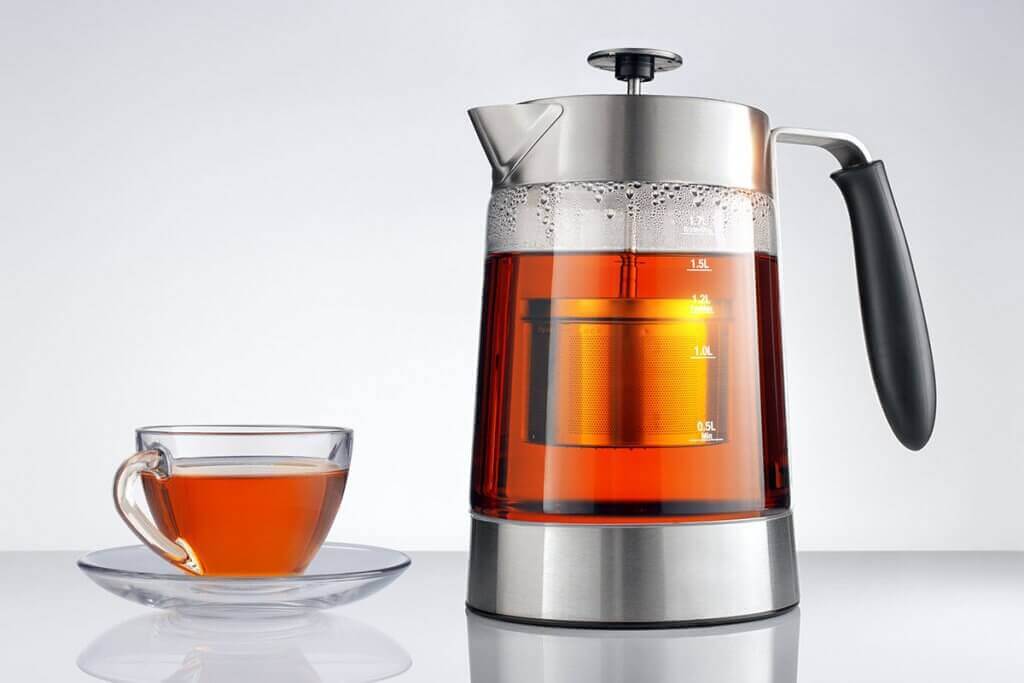
Handling
Pleasant handling should not be underestimated with kettles. After all, they are usually used several times a day and should therefore not cause irritation every time. Glass kettles with a round base are particularly practical. This allows users to rotate the container 360 degrees. It does not have to be placed at a certain angle.
The lid should also not be the kettle’s undoing. Bulky lids that jam or do not open wide enough make filling difficult. The lid should open at least far enough to be vertical to the container.
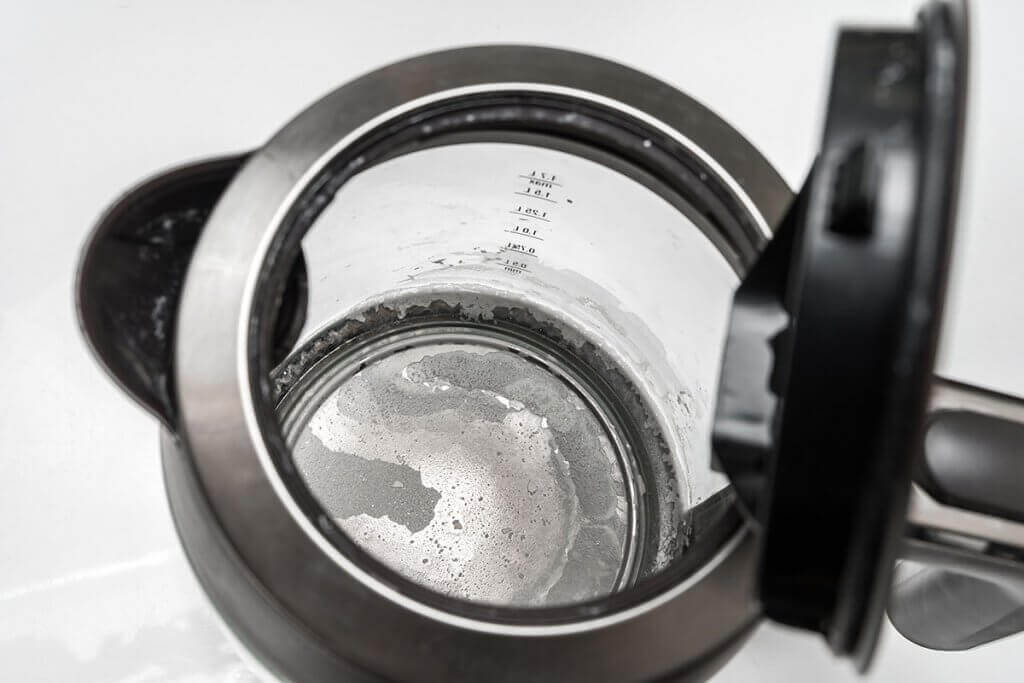
Last but not least, pay attention to the weight. Glass kettles often weigh a few grams more, usually between 1.0 and 1.5 kilograms. When filled, such a device weighs around three kilograms. This makes it difficult for weaker users, such as senior citizens or people with physical disabilities, to lift. If you want a particularly light kettle, you should look for a model made of plastic.
Heating
The housing of a glass kettle heats up very strongly. If handled carelessly, it can even cause a burn. Children should therefore not operate the glass kettle unsupervised. However, not all models heat up equally. Water containers that consist of only a thin layer of glass get the hottest. However, double-walled glass water kettles are often available, the outside of which remains much cooler. Models with an inner wall made of glass and an outer wall made of plastic heat up the least. Plastic is a poor conductor of heat.
Design
If you don’t want to store your kettle in the cupboard every time, you should not underestimate an attractive design. Glass kettles are a good choice in this respect. Most models have LED lighting, which usually lights up blue when boiling. But even without lighting, glass kettles are visually appealing. Many users enjoy watching the water boil.
Care instructions
As the name suggests, glass kettles are only intended for boiling water. You should not heat other liquids with it, otherwise your kettle could be damaged. You can wipe the outside of the glass kettle with a damp cloth and a little glass cleaner if necessary.
The inside needs extensive cleaning. This is because limescale builds up there in the course of use. Although some of the limescale is caught by the filter when it is poured out, regular cleaning is nevertheless indispensable. Limescale collects particularly quickly on an open heating coil. With glass kettles, however, this is usually covered.
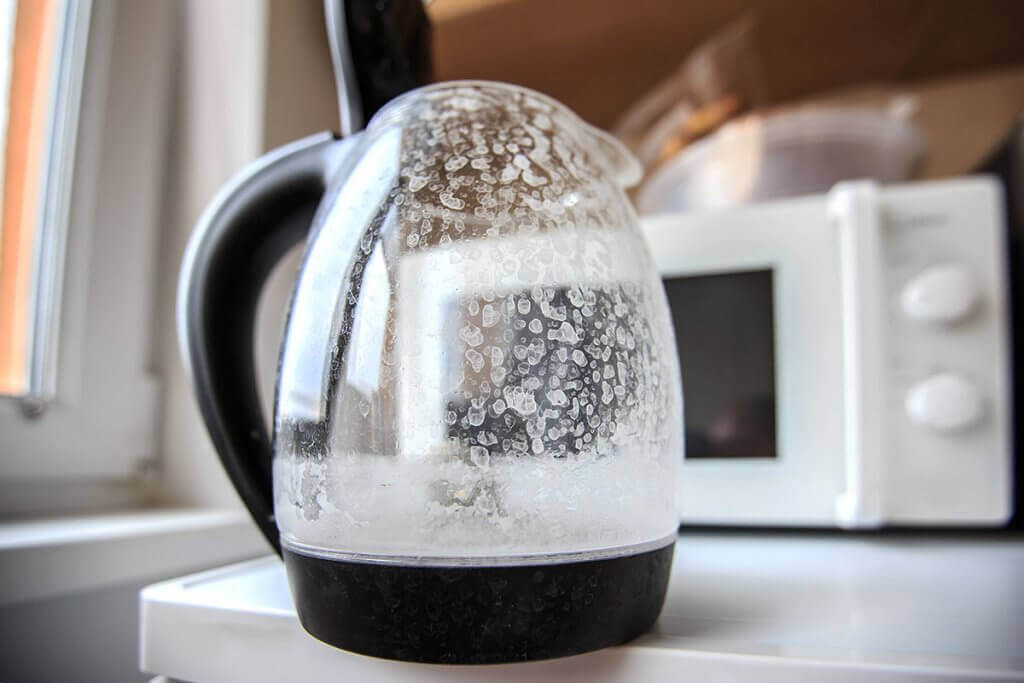
To decalcify, mix the cleaning agent with water and bring to the boil. If you do not want to use chemicals, cleaning with natural means is possible:
- Add a dash of vinegar or citric acid to the kettle with water.
- Bring the mixture to the boil.
- Pour it out as soon as the boiling process is finished and refill the kettle with fresh water.
- Bring the water to the boil again. Repeat the process until the smell of vinegar or acid is no longer noticeable.

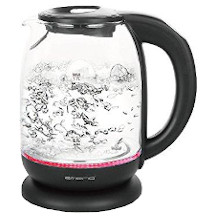
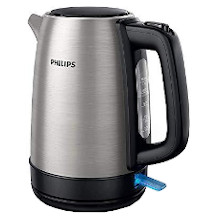
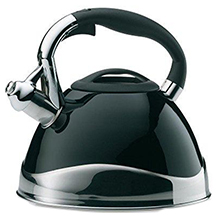
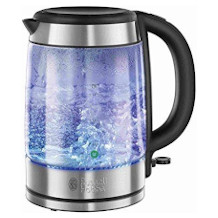
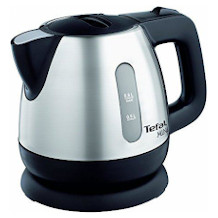

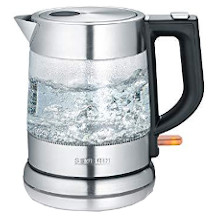

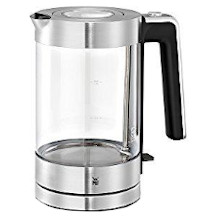

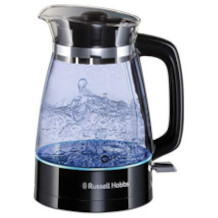
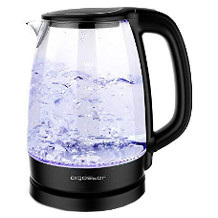
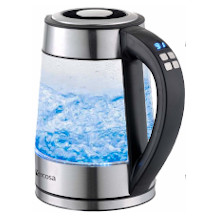
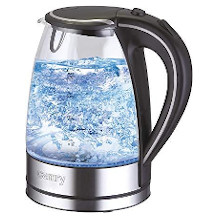
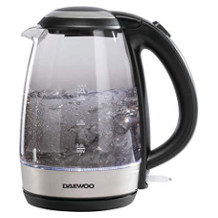
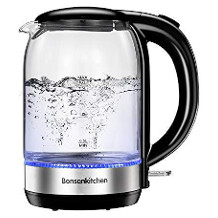
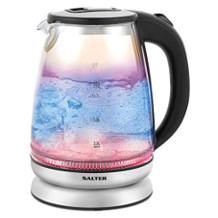

 892 reviews
892 reviews

